Microeconomics Unit Five Study Guide
1/39
Earn XP
Description and Tags
Microeconomics study guide for Ji's class. Covers Unit 5. Use in learning mode with multiple choice questions.
Name | Mastery | Learn | Test | Matching | Spaced |
|---|
No study sessions yet.
40 Terms
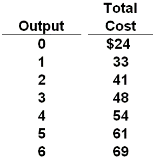
Refer to the below data. The average fixed cost of producing 3 units of output is:
$8.
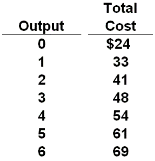
Refer to the below data. The average total cost of producing 3 units of output is:
$16.
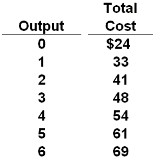
Refer to the below data. The marginal cost of producing the sixth unit of output is:
$8.
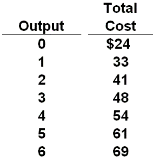
Refer to the below data. The total variable cost of producing 5 units is:
$37.
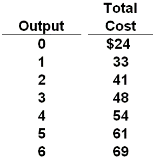
Refer to the below data. The profit-maximizing output for this firm:
cannot be determined from the information given.
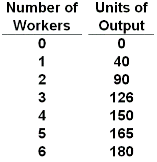
Refer to the below data. Diminishing marginal product of labor become evident with the addition of the:
third worker.
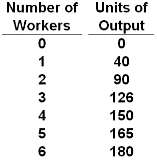
Refer to the below data. The marginal product of the sixth worker is:
15 units of output.
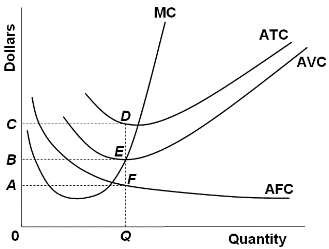
Refer to the below diagram. At output level Q total variable cost is:
0BEQ.
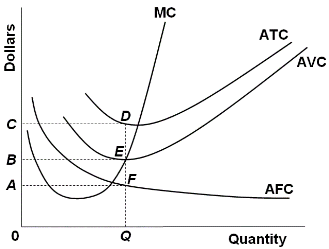
Refer to the above diagram. At output level Q:
marginal product is falling.
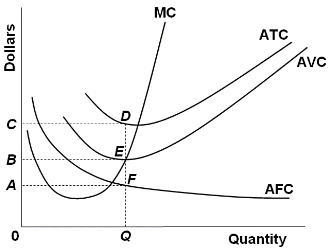
Refer to the below diagram. At output level Q total fixed cost is:
BCDE.
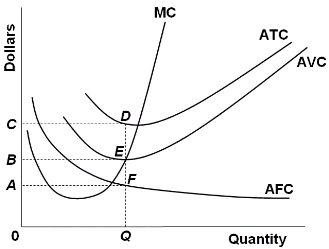
Refer to the above diagram. At output level Q total cost is:
0BEQ plus BCDE.
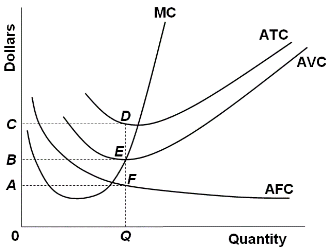
Refer to the above diagram. At output level Q average fixed cost:
is measured by both QF and ED.
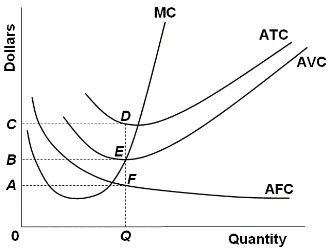
Refer to the above diagram. The vertical distance between ATC and AVC reflects:
the average fixed cost at each level of output.
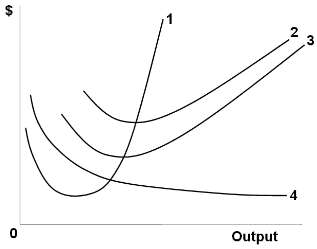
In the above figure, curves 1, 2, 3, and 4 represent the:
MC, ATC, AVC, and AFC curves respectively.
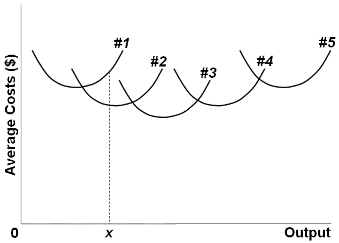
As the firm in the above diagram expands from plant size #1 to plant size #3, it experiences:
economies of scale.
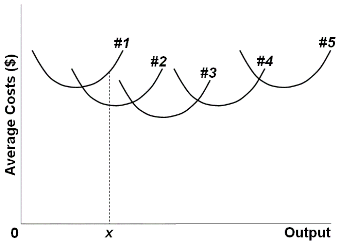
The above diagram shows the short-run average total cost curves for five different plant sizes of a firm. The shape of each individual curve reflects:
increasing marginal product, followed by diminishing marginal product.
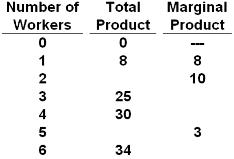
Refer to the below data. When two workers are employed:
total product is 18.
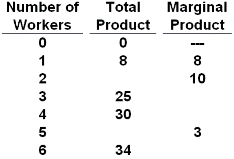
Refer to the below data. The marginal product of the fourth worker:
is 5.
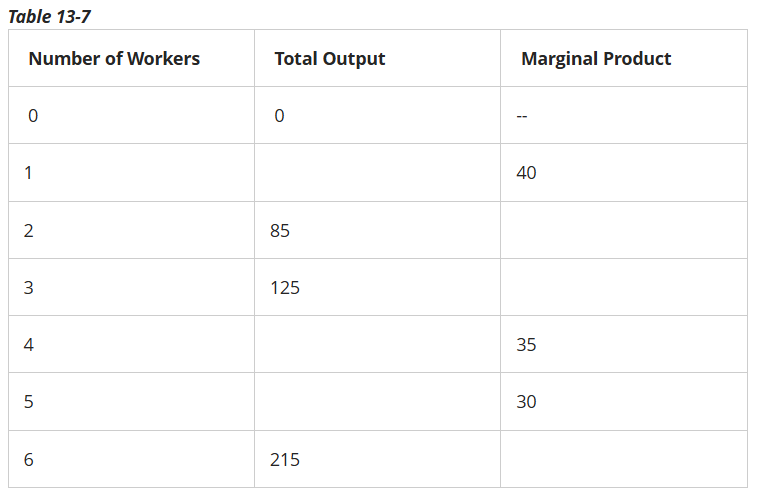
Refer to Table 13-7. What is total output when 1 worker is hired?
40
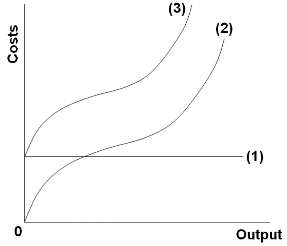
In the above diagram curves 1, 2, and 3 represent:
total fixed cost, total variable cost, and total cost respectively.
A production function describes
how a firm turns inputs into output.
If average total cost is declining, then:
marginal cost must be less than average total cost.
Average total cost is very high when a small amount of output is produced because
average fixed cost is high.
As Bubba's Bubble Gum Company adds workers while using the same amount of machinery, some workers may be underutilized because they have little work to do while waiting in line to use the machinery. When this occurs, Bubba’s Bubble Gum Company encounters
diminishing marginal product.
Which of the following definitions is correct?
Economic profit = accounting profit - implicit costs.
To economists, the main difference between the short run and the long run is that:
in the long run all resources are variable, while in the short run at least one resource is fixed.
Assume a certain firm regards the number of workers it employs as variable but regards the size of its factory as fixed. This assumption is often realistic
in the short run but not in the long run.
A firm produces 300 units of output at a total cost of $1,000. If fixed costs are $100,
average variable cost is $3.
A local playground equipment company plans to operate out of its current factory, which is estimated to last 30 years. All cost decisions it makes during the 30-year period
are short-run decisions.
A firm has a fixed cost of $500 in its first year of operation. When the firm produces 100 units of output, its total costs are $4,500. The marginal cost of producing the 101st unit of output is $300. What is the total cost of producing 101 units?
$4,800
Fixed cost is:
any cost which does not change when the firm changes its output.
If a firm decides to produce no output in the short run, its costs will be:
its fixed costs.
Suppose that a business incurred implicit costs of $200,000 and explicit costs of $1 million in a specific year. If the firm sold 4,000 units of its output at $300 per unit, its accounting profits were:
$200,000 and its economic profits were zero.
The basic characteristic of the short run is that:
the firm does not have sufficient time to change the size of its plant.
If a variable input is added to some fixed input, beyond some point the resulting extra output will decline. This statement describes:
the law of diminishing product of labor.
Suppose that a business incurred implicit costs of $500,000 and explicit costs of $5 million in a specific year. If the firm sold 100,000 units of its output at $50 per unit, its accounting:
profits were zero and its economic losses were $500,000.
Which of the following curves is not U-shaped?
AFC
A firm has a fixed cost of $500 in its first year of operation. When the firm produces 100 units of output, its total costs are $3,500. When it produces 101 units of output, its total costs are $3,750. What is the marginal cost of producing the 101st unit of output?
$250
Which of the following is correct?
When MP is rising MC is falling, and when MP is falling MC is rising.
Accounting profits are typically:
greater than economic profits because the former do not take implicit costs into account